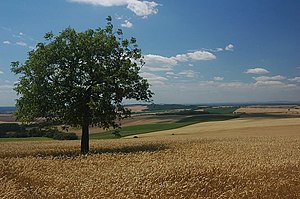
Cargando...
What can I do?
226313 materialEducativo
textoFiltroFichaAbout this resource...
Manuel es agricultor, planta semillas de tomates, verduras... luego recoge sus frutos y los vende en el mercado. Lo que más le gusta de su profesión es estar en el campo, al aire libre y en contacto con la naturaleza.
¿Sabías que el inicio de la agricultura se encuentra en el Neolítico? La economía de las sociedades humanas evolucionó desde la recolección hasta la caza y la pesca. Las primeras plantas cultivadas fueron el trigo y la cebada.
Fueron varias culturas que practicaron la agricultura de forma independiente, como las que se desarrollaron en la zona de Oriente Próximo (desde Mesopotamia al Antiguo Egipto), las culturas precolombinas de América Central o la cultura desarrollada por los chinos al este de Asia entre otras.
Como figuras destacadas de la agricultura a lo largo de la historia podemos mencionar a: George Washington Carver, John Deere, George Harrison Shull, Norman Borlaug, Cyrus McCormick y Rachel Carson.


Mira un ejemplo de lo que te pierdes
Autores:
Categories:
Tags:
Add to Didactalia Arrastra el botón a la barra de marcadores del navegador y comparte tus contenidos preferidos. Más info...
Comment
0